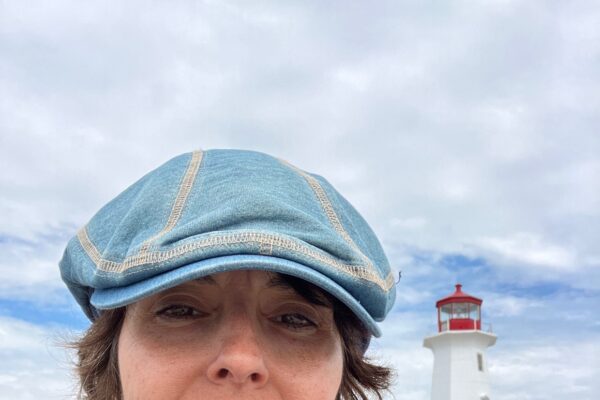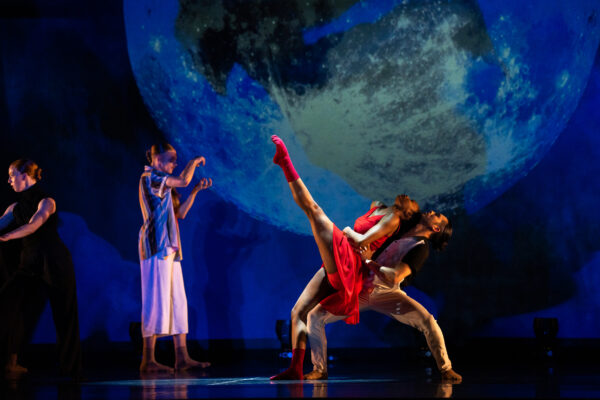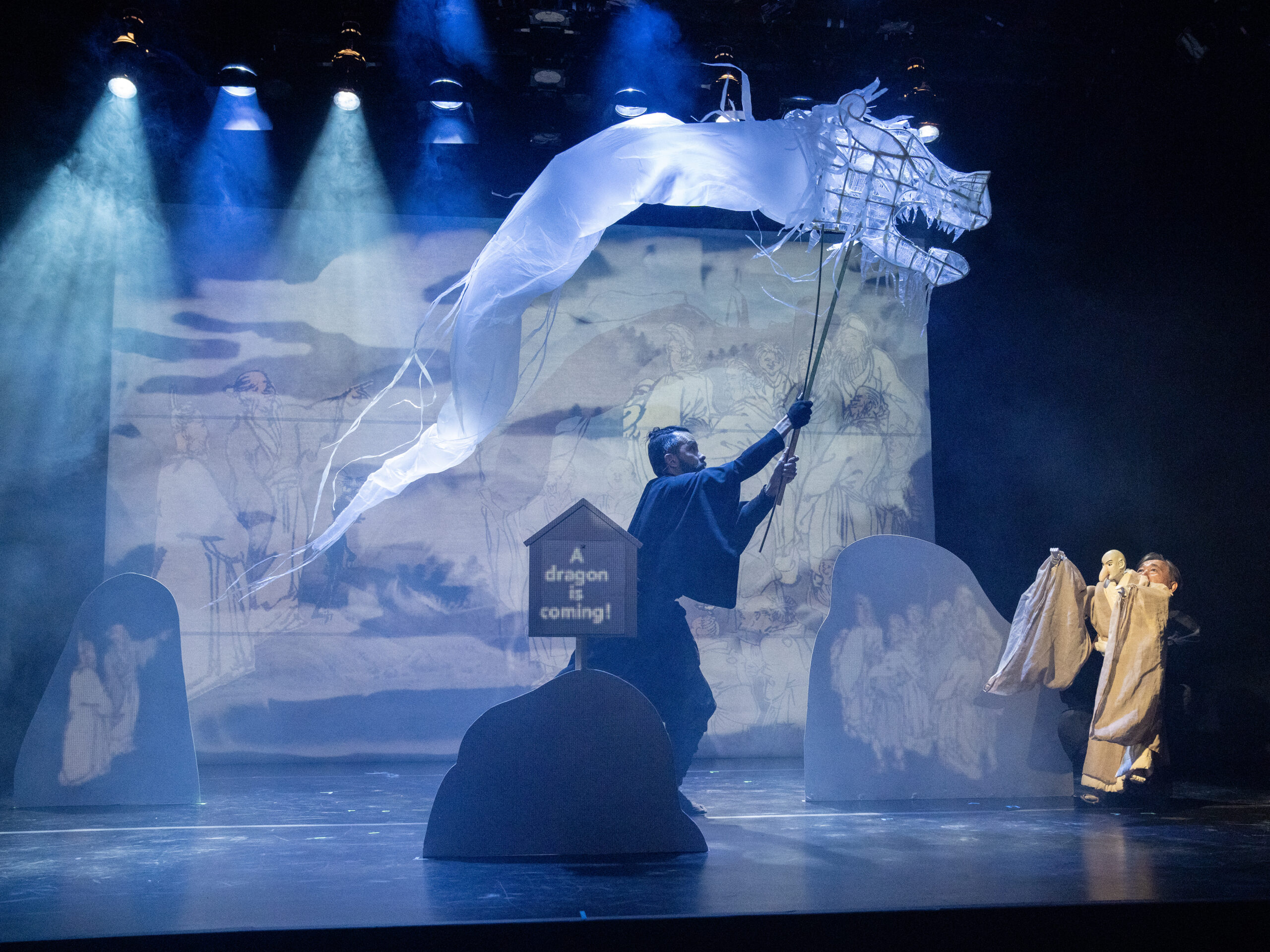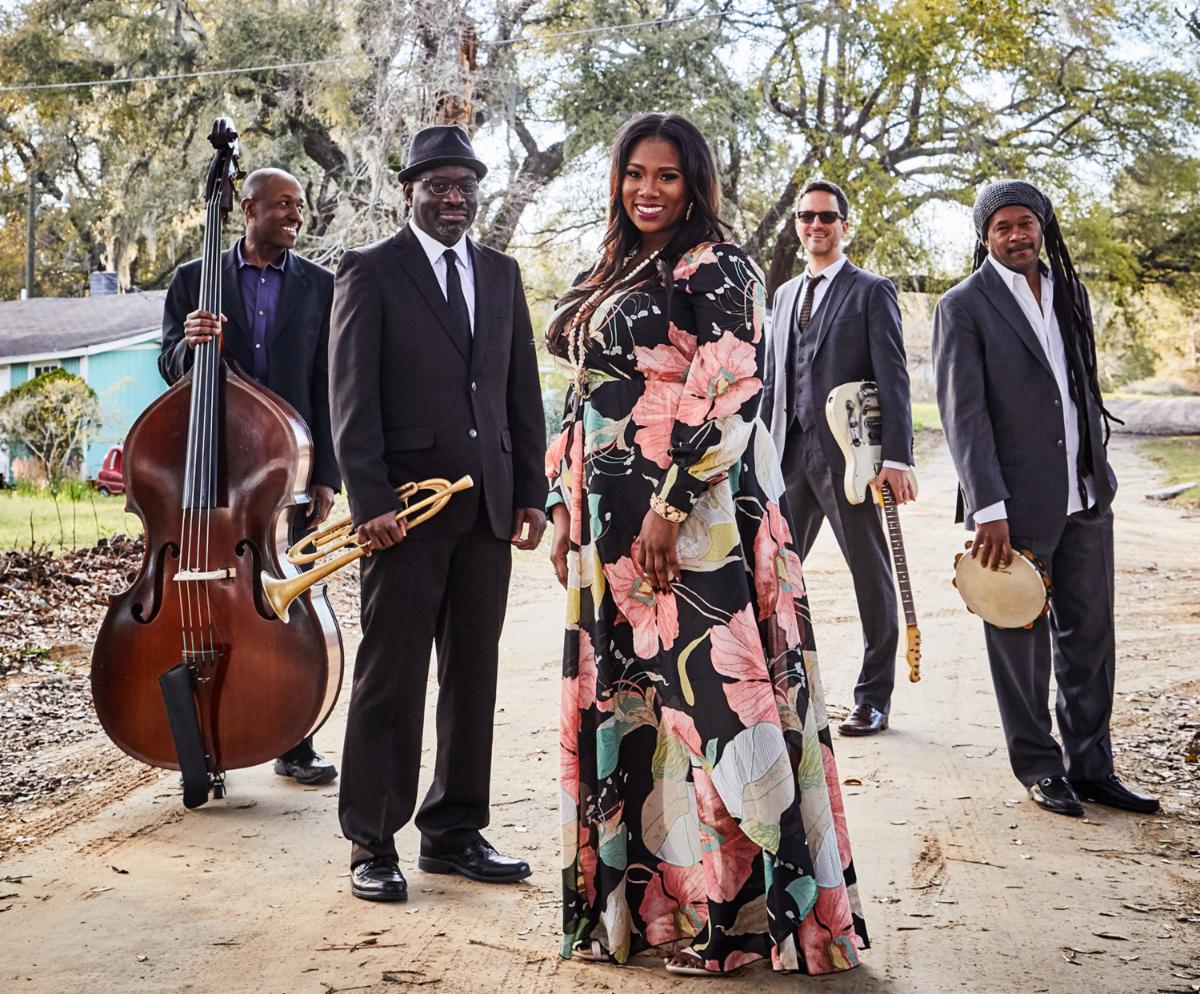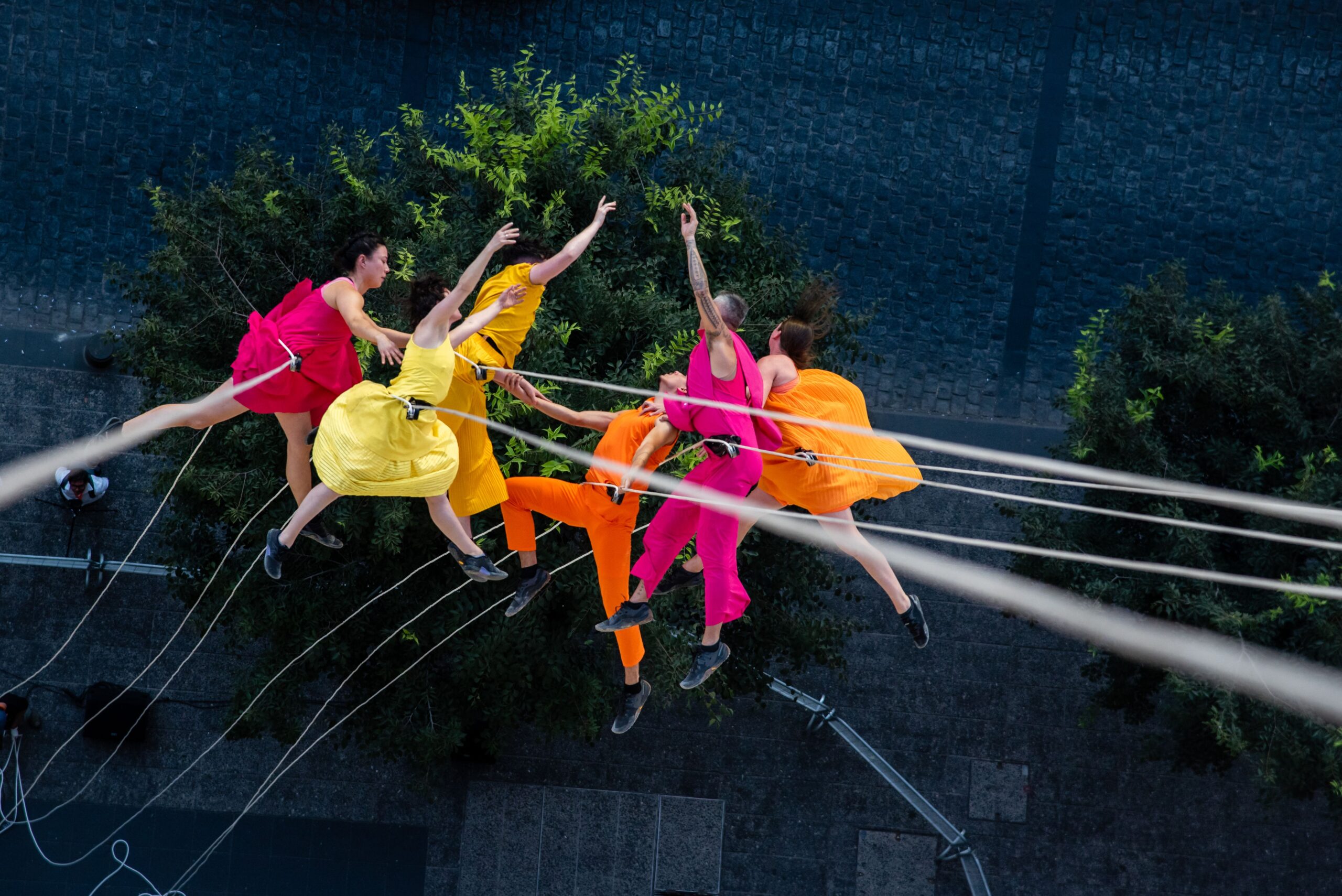Dance Place’s Engagement with Dancing Wheels’ Making Memories: A Journey through Dementia
By Mackenzie Kwok
July is Disability Pride Month. This month (and year-round), we celebrate and honor the history, achievements, and experiences of people with disabilities. This month’s Arts Spotlight explores Dance Place’s engagement Dancing Wheels Company & School, supported by our Special Presenter Initiatives program in January 2024.
Dance Place is a DC-based nonprofit that supports dance and movement artists, centering people who have been historically excluded from the dance field. Dancing Wheels Company & School provides dancers with all abilities full access to dance. We spoke with Dance Place Grants Manager Bonnie Brady and Executive Director André Mazelin about their engagement with Dancing Wheels.
Why was it important for Dance Place to present Dancing Wheels’ “Making Memories: A Journey through Dementia”?
It is Dance Place’s vision that any person, no matter their race, physical ability or appearance, gender identity or economic background, can come to Dance Place or any of its programs and see themselves reflected. In examining our successes and challenges in accomplishing this vision, we recognize that we need to make a more intentional effort to create a safe empowering space in which artists who have disabilities can learn, create, present, and build community. In presenting Dancing Wheels’ Making Memories: A Journey Through Dementia, we continued our work in a multi-year process of building this safe space that will include facility upgrades for greater accessibility, artist residencies inclusive of marginalized groups, staff professional development, partnership development, and experimental performances. During this year, data will be collected from these events/experiences to help build the Dance Place Accessibility Plan that will be incorporated into a new Dance Place Strategic Plan.
This funding was to support organizational learning related to improving our engaging and empowering artists, students, and audience members who have physical disabilities. While the funds were used to support the engagement of Dancing Wheels, America’s first professional physically integrated company with a composition of professional stand-up and sit-down dancers, we were able to use this opportunity for organizational learning related to improving our engaging and empowering artists, students, and audience members who have physical disabilities. The information gathered and lessons learned are being used to shape our on-going efforts to work in partnership with this community.
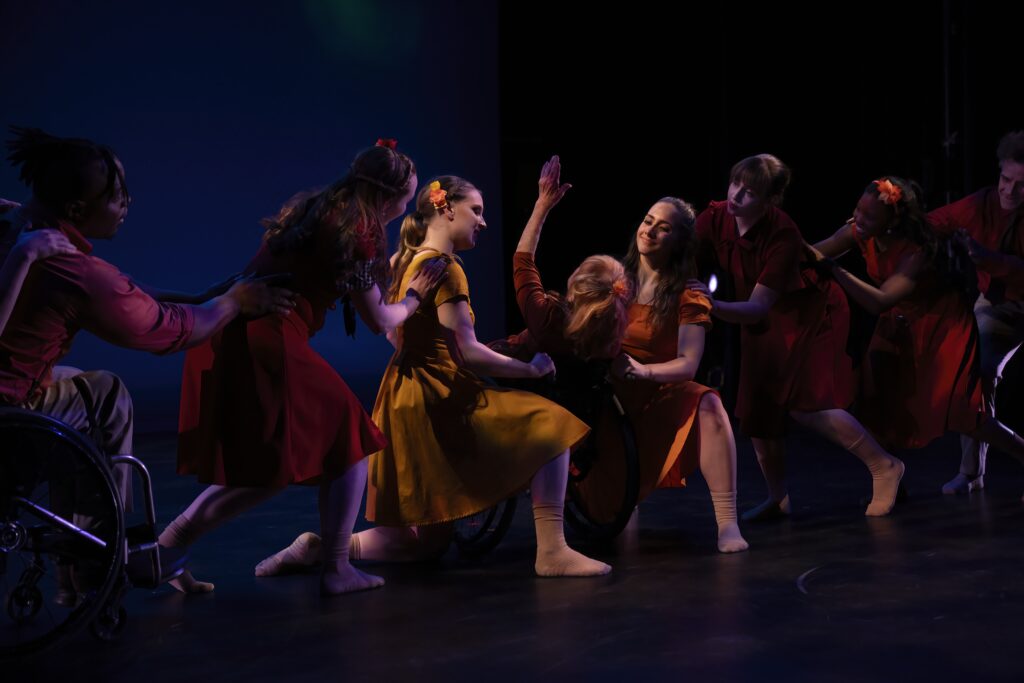
Display caption
Image: Dancing Wheels performance at Dance Place, January 2024. Credit: David Dowling.
How did this engagement with Dancing Wheels align with Dance Place’s mission?
Rooted in the United States capital, Dance Place supports movement artists by creating opportunities for creative development, performance, and education. By investing deeply in artists and centering those who have been systematically excluded from such opportunities, we strengthen the dance field. It is our vision that any person, no matter their race, physical ability or appearance, gender identity or economic background, can come to any Dance Place program and see themselves reflected. We realize our mission by:
- Supporting the creation and development of new dance work by artists and companies;
- Presenting dance performances, featuring a variety of genres, by local and non-local artists and companies in our theater and in locations throughout DC;
- Providing opportunities for youth and adult dancers to engage in a wide range of dance classes; and
- Serving our city and the arts community through inclusive ticketing options, scholarships to our educational programs, and civic participation.
The fundamental belief behind the Dancing Wheels Company & School is that IF DANCE IS AN EXPRESSION OF THE HUMAN SPIRIT, then it is best expressed by people of all abilities. Considered one of the premier arts and disabilities organizations in the U.S., Dancing Wheels is a professional, physically integrated dance company uniting the talents of dancers both with and without disabilities. Making Memories: A Journey Through Dementia is not only a performance that engages artists of different physical abilities, but the subject matter focuses on community members that are impacted by another disability, dementia. The piece was created with the input of people with dementia, care givers, medical professionals, and individuals from related community organizations.
The community engagement programs include all of these groups. We were so excited by the opportunity this project provided us to engage our local community members impacted by dementia. In just our first few weeks of outreach we created new community connections that extend beyond the performance. In addition, as part of our work on dance & disability, this performance and our interactions with the amazing Dancing Wheels team, helped us improve our services and connections to artists who have different abilities.
What are some highlights from the engagement of Dancing Wheels?
In addition to providing an amazing performance for our community, highlights included:
- Growing and Expanding Dance Place’s knowledge of working with artists who have disabilities.
Throughout the pre-production work, the Dance Place presentation team worked closely with Dancing Wheels to identify new areas of needed support that were specific to artists who had physical disabilities. For example, while hallways were accessible, we needed to examine if the corners connecting those hallways were accessible. Wiring needed to be structured so that it was accessible, yet not in the way of the wheeled dancers. For the dance class, we needed to think through the physicality of the dance to have varying moves for students with different physical, mental, and/or intellectual ability levels. This interaction also enabled us to expand our artist intake process and questions to be more proactive and inclusive in facilitating artist engagements.
While we prepared as much as possible, there was still a lot of onsite learning that occurred. For example, while our restrooms are physically accessible, the doors are too heavy for someone in a wheelchair to open. These onsite learnings were tracked and will be incorporated into an accessibility audit we hope to complete during FY25.
- Providing a new forum and form through which our greater DC community can learn more about elder care, the effects of Alzheimer’s disease and dementia, and the care required for this community.
This presentation provided an opportunity for Dance Place to start conversations with community partners that we have never worked with before, those engaged in elder care. In addition, we were able to provide an informational outlet through which people impacted by dementia could learn about all of the different related community services available in DC.
- Engaging with Accessible Integrated Media (AIM) to support how we are presenting the work. AIM was included in pre-production meetings as we work through the Dancing Wheels Company engagement.
Scheduling pre-production meetings with the artists and AIM became challenging. Instead, our production team communicated artists’ needs to the AIM team so that together they could identify what AIM needed to have and to do to make sure artist needs were met. The efforts of our production team were met with high praise from the AIM team. Feedback included:
“Hi, I just need you to know before the show even starts how absolutely phenomenal the team here is. Like- accessibility at the highest, most thoughtful level. Jamison specifically has been wonderful about making sure I’ve got what I need. What a cool event!”
Flexibility and communication were key to the engagement of AIM in our work to support artists. As we move ahead, we are interested in continuing to develop a process through which AIM is involved in each performance, especially those engaging artists or topics related to physical disabilities.
- Building Community: The idea of community involvement was a driving force in the development of this amazing work and has been the catalyst for the development of amazing partnerships and exchanges.
Through this engagement, we created two new relationships and shared information with dozens more. The DC Department of Aging partnered with us to host a lobby exhibit before and after the show to highlight community resources to support people impacted by dementia. The Village at Rockville served as a panelist for our post-show talk back that engaged the choreographer, dancers, practitioners, community representatives and the audience in a conversation about living with dementia (as patients, family, and caregivers).
- Collecting feedback on successes and challenges of Dance Place’s efforts to support artists, students, and audience members who have disabilities. This information will be used in Dance Place’s upcoming strategic planning process.
Feedback was collected informally throughout the process of the engagement, with changes to our work being made along the way so that future artists benefited from our lessons learned. In addition, formal feedback was available, and we are still working with the artist to continue the conversation. Unfortunately, a snowstorm prevented many people from coming to the show, so our feedback response was low.
Our work to engage and empower people who have disabilities is on-going, and we know we have a lot of areas of potential growth. This grant helped get the conversations started, and we will continue to work on this as we host our Dance & Disability residency this fall, and as we finalize our strategic work plan so that it prioritizes our engagement and advancement in this area.
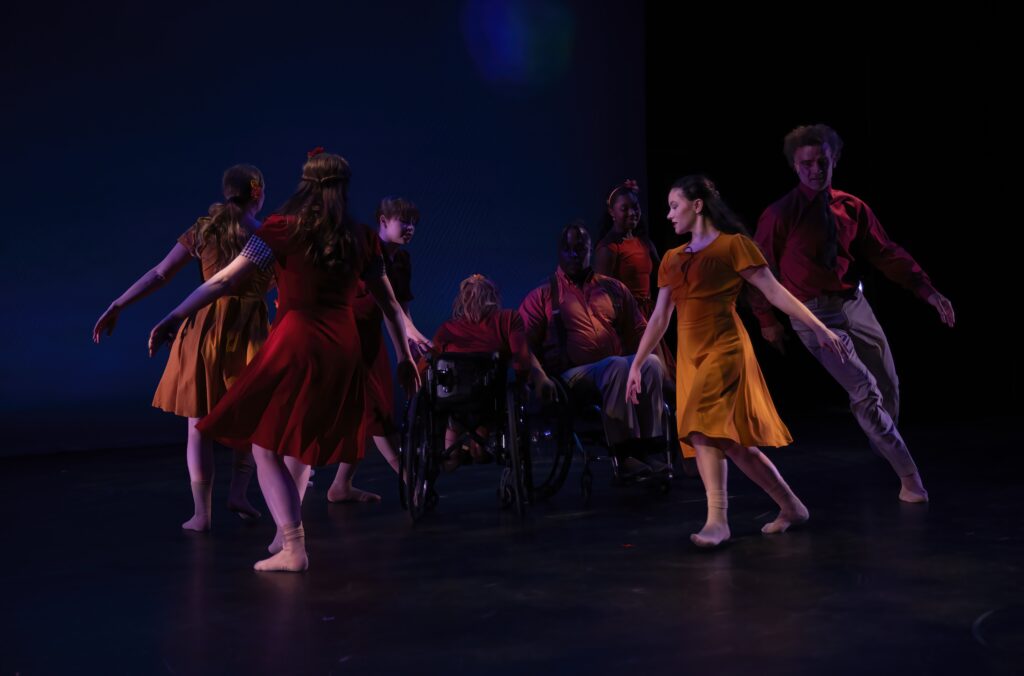
Display caption
Image: Dancing Wheels performance at Dance Place, January 2024. Credit: David Dowling.
What community partnerships were strengthened from this engagement?
Through this engagement, we created two new relationships and shared information with dozens more. The DC Department of Aging partnered with us to host a lobby exhibit before and after the show to highlight community resources to support people impacted by dementia. A staff member from The Village at Rockville, a senior housing facility, served as a panelist for our post-show talk back that engaged the choreographer, dancers, practitioners, community representatives and the audience in a conversation about living with dementia (as patients, family, and caregivers).
Does Dance Place have any upcoming events you’re excited about?
From September 30 through October 6, 2024, with support from the National Endowment for the Arts, we are excited to bring Donald Lee to Dance Place for our Dance & Disability Residency. Donald will spend a week in creative residency on our campus. As part of the engagement there will be a site-specific showing of a work in progress, and we will present a short PBS documentary on Donald followed by a facilitated conversation with the artist. Through this residency, Donald will bring together a performance exploring disability aesthetics, community engagement, and thought-provoking dialogue.
More about the artist: Donald Lee’s naive expression and experimental practice center on his evolving body, narrative, and belonging. His methodology transforms the aesthetic of damage into a system of repair. Donald has danced with Heidi Latsky Dance and Tap: On Tap. Donald has been profiled by PBS and New York Times and was featured in a documentary short that premiered at 2024 ReelAbilities. In 2023, he presented at the HASTAC conference at Pratt Institute. He is also a contributing artist in Miranda July’s latest work in her solo exhibition currently showing at Fondazione Prada.
